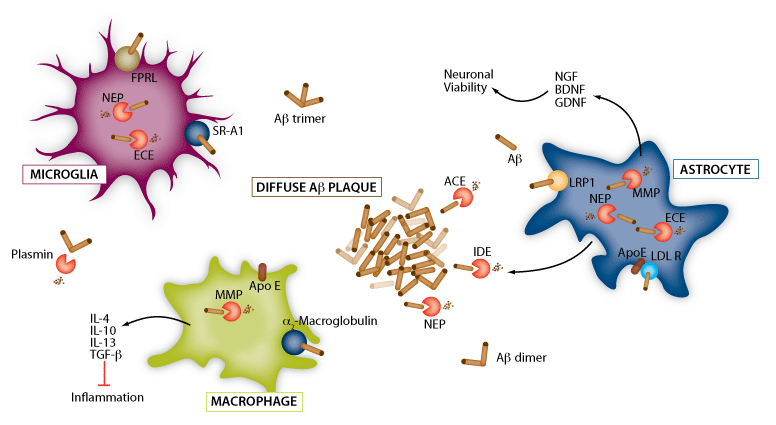
After all these years does the incurable disease now have a cure?
Imagine a life where you just forgot everything. From doing the simplest things like tying your shoe, to things like who your family members are. Imagine not being able to remember who you are and where you live.
Now take that imaginary life of yours you just created and imagine that being your reality. Think about how different your would be life be? I know I’m terrified of this becoming my reality. I couldn’t even imagine it. But what you don’t know s that people with Alzheimer's have to live like this every day.
44 million people live with Alzheimer's! This is insane. The reality of 44 million people, I’m terrified of.
Question: Well if I’m so terrified of it why should those people have to live with it?
Answer: Because there’s no cure.
Yep, that’s right. This horrible disease has no cure. But before we get into the cure part lets look at what Alzheimer's actually is and how someone gets Alzehimers.
Introduction to Alzheimer's
In our bodies, we have these proteins and for them to work properly they need to be folded properly. Just like if you need to fit a ton of stuff into a suitcase you need to have it folded properly to have it all hopefully fit into the suitcase. It’s sort of the same idea.
The specific protein is called the Amyloid Precursor Protein. What happens is it is cut into fragments. These clumps together and form insoluble amyloid plaques in a β shape, and form between neurons.
Alzheimer's is what we call a neurodegenerative disease which means that all this misfolding of proteins is happening in our neurological systems. All this blockage is causing your brain to lose function over time and is the cause of peoples Alzheimer's.
Curing Alzheimer’s today
Now that you know the cause of Alzheimers lets look at a cure.
Like I said before there isn’t a real cure for Alzheimer's today. There are some people who believe that having a healthy lifestyle, eating healthy, working out regularly, etc. can help decrease your chances and they aren’t wrong but it isn’t a cure.
There are also ways that you can reduce symptoms. Drugs like donepezil, rivastigmine, and galantamine can help slow down how fast the amyloid fragments are clumping together, and memantine helps with simulating different neurotransmitters to help with brain function.
But again, this isn’t a cure. This doesn’t stop the plaques from forming. This doesn’t target the root causes Alzheimer’s. That is what we should be doing. Targeting the main cause of Alzheimer’s. And that’s what I think this cure can do.
The cure of the future
So after all these years, scientists might have finally found a way to cure Alzheimer's. And guess what?! It’s in our body and it’s a part of us!
Our body has ways to degrade amyloid plaques all by themselves.
The reason we can’t just stop them in the first place is that Alzheimer's is more related to a lack of clearance than an increase in production.
We did try one thing which was decreasing levels of the BACE1 enzyme but it didn’t have the best results for curing patients with Alzheimer’s. This is because this particular enzyme actually helps create the amyloid plaques. So, by decreasing it, you’re messing around with how the plaques are formed instead of trying to clear them which is what we should be doing.
So, back to how our body can degrade amyloid plaques all by themselves. The cells that do this in our body are phagocytes. They are basically cells that “eat” the plaques and degrade them:
Astrocytes
Astrocytes are found on the Blood-Brain-Barrier. They detect plaques based on scavenger receptors, which is a signal that the Aβ plaque is there. The most common scavenger receptor is called LRP1, which binds to ligands (ions or molecules bonded to a metal atom) and transports them through the inside of a cell.
Microglia
Microglia are also found on the Blood-Brain-Barrier but they do something different. They’re activated by the presence of Aβ plaques, but as we age they are overactivated because there are so many plaques to clear. This leads to inflammation.
Macrophages
These are bone-marrow-derived cells that are found in tissues as well as white blood cells.

If you look at the diagram, you’ll see little abbreviations like ECE, NEP, APOE, and MMP. Those are all different types of Amyloid Degrading Enzymes. These cut the amyloid plaques to make them smaller and easier to clear out. These are found in the cells above. They cleave either the amino acid sequence of the plaque or a section that's called the C-terminal.
Cleaving works for Tau aggregations too. Aminopeptidases, HTRA1 and caspases 3 and 6 all cleave the Tau tangles from either the N or C terminal region. They work from inside the neuron.
This is pretty helpful, but this still isn’t a cure. The problem with these is that they stop happening as we age, which is what leads to diseases like Alzheimer’s.
If we can find a way to activate these proteins again, Alzheimer’s patients would be able to degrade these plaques and tangles just like before they got sick. In other words, we would be able to reverse the effects of Alzheimer's!!!
This is huge! Being able to completely reverse the effects of Alzheimer’s would save so many lives.
44 million people live with Alzheimer’s. With this, we can make that number close if not exactly 0 in the next 5–10 years. I don’t know about you but I think this is insane!
